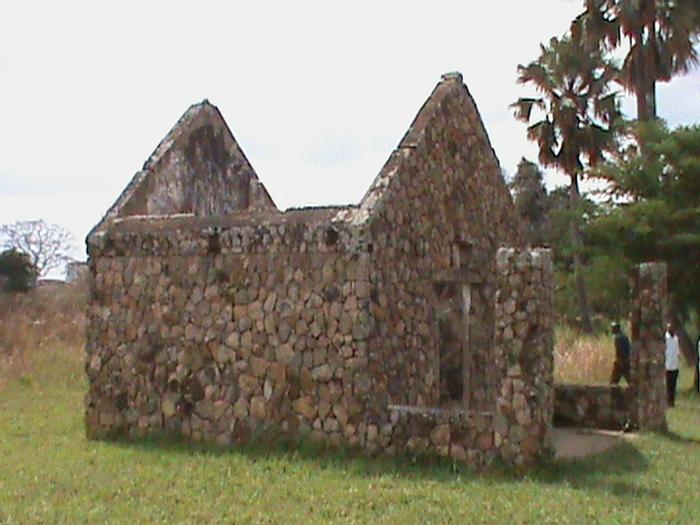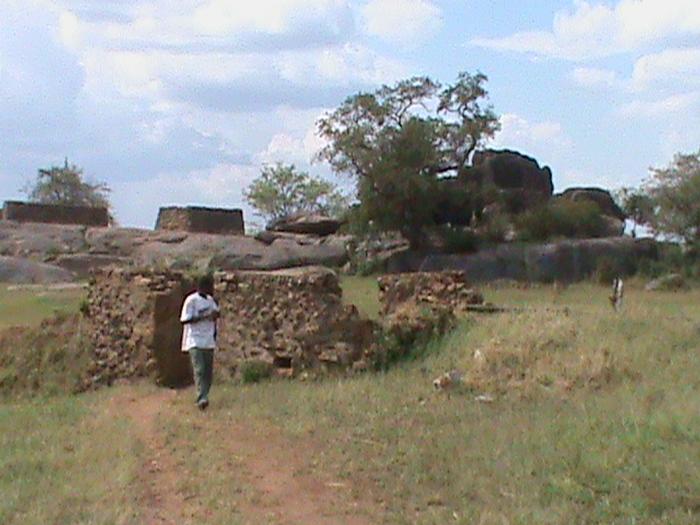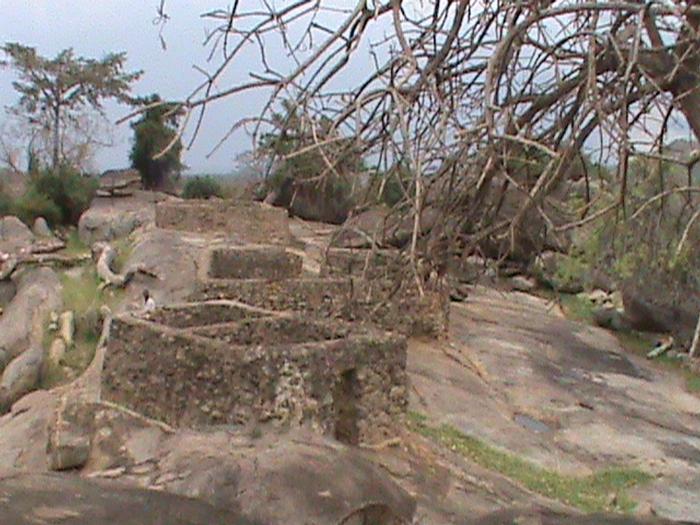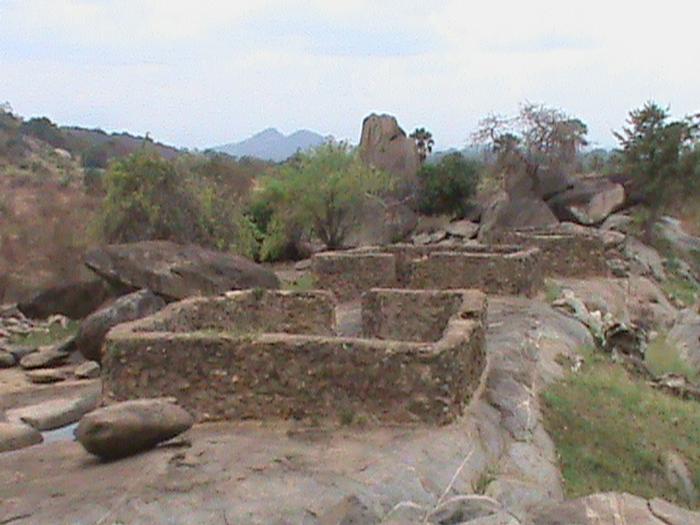[ID:85] Fort Patiko: A Tale of Gory TransformationsUganda Ojara is being severely beaten and mocked by a group of Arab slave merchants. The Arabs are having a time of their life but the other slaves helplessly look on in fear like lambs waiting for slaughter. They can’t dare utter a single sound for they know the ghastly fact that anyone of them could be next! The Arab commander, Jadia, steps forward and tells his colleagues that the boy has had enough. Ojara sighs thinking that he’s got some relief but the worst is yet to come. The Commander barks orders for him to run and jump over the fortress hole, a man-made trench about 16 feet wide and 15 feet deep that acts as a ring fence around the fort! Ojara knows that his final hour has come since many other slaves before him have undergone this test. Success means life while failure implies death!
The opening salvo to the strings of transformations that Fort Patiko has experienced over time is a timeless classic tale narrated to me by my grandmother, featuring a young slave boy from my Pachua clan called Ojara. The period is kaare me opii, the days of slavery and the set is the frontiers of Fort Patiko. Fortunately for Ojara, he lived to tell his story but countless natives lost their lives in such gruesome or even worse ways. This legendary tale depicts the typical atmosphere of the fort in its heydays.
Built originally as a slave screening centre and a fortress, the chronicles of Fort Patiko are incomplete without a mention of human blood. Until a few decades ago, locals reveal that human blood stains were clearly visible on the rocks! Arabs plying the trade routes arrived with slaves, built the Fort and proceeded to raid the local community for more slaves and food items like millet and sorghum - traditional food crops in this area. Physical strength, gender, age and health were the criteria for screening. Females were put in separate caves from the males before chosen slaves were marched through the currently semi-autonomous Southern Sudan to Egypt for shipping to slave markets worldwide.
As grandma went on with her narration, I pictured a place with sorrow suspended in the air, death written on peoples’ faces, with perhaps no buildings but just pools of human blood! Contrary to my imagination, Fort Patiko presents an ethereal view of nature and architecture existing in harmony giving space a sense of place. The serenity created by this fusion left me in tremendous wonder. The sound of leaves rustling in the gentle breeze that blew stealthily over the rocks caressed my ears but that of the Tuula, a bird believed to cause bad luck in Acholi folklore gave me goose bumps. Intuitively the space was sacred! The Amari and the surrounding caves, which in their magnificence had awed me at first, turned out to be just a tip of the iceberg!
The Amari, three roofless stone wall structures, had a thatch roof supported by wooden pillars that go into the wall; forming downturned eaves. The stones were bonded using red anthill mud, believed to have better bonding properties than ordinary mud. Basic easily accessible local materials and simple techniques were used in a cunning adaptation of vernacular architecture! The caves mirror the inhumane treatment that my ancestors were victims to. At first glance, they’re simply a natural wonder but their reality unfolds when tipped about their history.
In the annals of Fort Patiko, Sir Samuel Baker and his wife Florence hold a special place. The former, a British explorer conquered the fort from the Arabs and gave it its current name in 1872. Florence designed a cross on one of the rocks. This cross, visible at close range in a swirl of color adds rock art to the wonders of the Fort. In addition, Florence’s beauty enchanted the local people who nicknamed her Anyadwe, literary translated ‘daughter of the moon!’ In Acholi language, Anyadwe is the name of a bright early morning star. Sir Samuel Baker used the fort as a military base while pioneering total abolition of slavery in the Equatorial Province that extended from Egypt to present day northern Uganda. When Baker met Florence, she was herself a slave and this perhaps explains his immense determination to succeed in his mission.
Geographically, the fort is located about 32 kilometers north of Gulu municipality in Northern Uganda. It lies in the rural settlement of Ajuulu in Patiko Sub-County, graced by an open panoramic landscape and dotted by a few hills. About 7km from the fort is River Unyama, a seasonal river that joins River Aswa which is a tributary of River Nile. The fort is surrounded by the Acholi tribe whose ethnicity is traced to the Nilotics who migrated from Sudan. With a rich and diverse culture, the Acholi declaim proudly of one of the most cherished cultural roots in the country. The justifications are in the variety when it comes to the arts of which their simple architecture is inclusive.
Official access to the fort is through the quarter guard, a forlorn looking, roofless stone ruin designed with defensive considerations such as leaving holes on the walls to allow a guard to fix his gun and still have a strategic view of the outside space. From here demarcations of the original trench can be seen, derelict and nearly filled by eroded soils. The quarter guard opens to a large space defined by very short grass and a footpath that runs across near-diagonally. At the right edge of this space are a few tree stamps and Yago, a tree whose fruit is believed in Acholi folklore to be the lion’s substitute for fleshy prey!
At the far end of this space is the ageless rock locally called Got Ttaaya, the main scenic spot of the Fort which houses several caves and forms the base of the three architectural wonders of the Amari. They are naturally elevated by the rock, roofless and therefore graced by the fullness of natural lighting and heat. Their great richness in texture in every nook and cranny, the dull natural coloring that blends with the natural space and the ambiance provided by rocks and trees are an invitation to rest and revitalize. Furthermore, the Amari vary in size and shape. The larger two have opposite facing outlets and are single roomed with a floor area of about 10 sq. meters. The smallest has two rooms accessed through parallel openings. Their wall heights also vary slightly due to their positioning on semi flat rock surface punctured by several depressions and a general lack of a foundation. The Amari afford a stunning example of the durability of stone when used in architectural design! The depressions preserve rain water when they form temporary ‘ponds’ locally called Kojjo. During the dry season, the Kojjo become ‘oases’, providing the locals with water for domestic use. Their greenish appearance in shinny weather is a breathtaking sight!
Mzee Ochimi (Mzee is a Kiswahili word for an old man) is in his early 80’s, an unusual age in a country whose past has been marred by war and political turmoil and where social welfare is but just academic jargon. At his age the community looks up to him for guidance and counseling. This is because of his vast experience in life, having witnessed the 20-year Lord’s Resistance Army (LRA) war that ravaged northern Uganda from its infancy. During this war, many people were murdered, children abducted and forced to serve as sex slaves and child soldiers while vast properties were destroyed. The atrocities witnessed were comparable only to those seen in places like Darfur, Sudan. The 1996 abduction of girls from Aboke, a Catholic Mission girls’ secondary school brought the insurgency to the world’s attention. While the Ugandan government engaged in full military confrontation with the rebels, relief organizations specialized in providing aid to the fleeing populace who were later confined in Internally Displaced People’s camps.
For my people in Patiko Sub County, the Amari and caves in the fort provided safety, being a shield from the bitter cold nights and a hiding place away from the rebels. This refuge was unfortunately only short lived. After a while, the rebels discovered the people’s hideout and turned it into their spot for laying ambushes on civilians and government soldiers alike. True to its past, the fort was once again at the centre of indiscriminate bloodshed. In the process, its natural beauty was defiled.
Before the war, the Fort had flourished as a cultural site, hosting a multi-racial array of tourists who came to partake of its serenity. Traditional Acholi artifacts such as leopard hides, musical instruments like thumb pianos, and traditional weapons of defense like shields were displayed. They were housed in a more contemporary looking structure, built entirely with stone but bonded using cement. Granaries of different sizes were also displayed with the largest locally called Goga, almost the size of an archetypal Acholi hut. This showcased the traditional way of ensuring food security for a community whose primary occupation is subsistence agriculture. All this was swept away by the war leaving the fort in desecration and ruin. Indeed, the fort is as much of a victim as it is a witness to something close to a cultural genocide.
With the war gone, people are finally returning home to rebuild the ruins. Government support for resettlement and recovery is simply inadequate. The fort is in danger from vandalism and encroachment as the returning, destitute locals indiscriminately fell trees for fuel and look to the Kojjo for water. As the catastrophic realities of climate change hit harder, wild fires set by the locals in preparation for the planting season and during hunting expeditions are claiming the vicinity of the fort. The race is against time to preserve what is left of this sacred place! Preserving the Fort with its locally significant history but little known sanctity requires a multi faceted approach spearheaded by a well educated human resource drawn from every sphere of influence of society, architecture inclusive and culture inevitable.
Unless the people returning from IDP camps are fully resettled and supported with alternative fuel and water resources, expecting them to leave the fort alone is ridiculous. Recently there has been a serious reduction in the number of relief organizations in this area, citing the end of the war. I believe that these organizations ought to stay a little longer and nurture these communities to the level of self sustenance as they digest doctrines like that of environmental protection alongside amnesty and reconciliation. This will guarantee the safety of the fort. In addition, community stakeholders are called upon to financially and technically back projects that tackle the perils of climate change. The ‘Go Green’ campaign should not only be preached but practiced in the periphery of the fort. The locals should be educated about the value of this fort to their cultural heritage and be persuaded to have respect for inanimate things like nature’s handiwork because only then can they ensure vigilance. They should also be taught to embrace good agricultural practices that do not endanger the Fort and its ecosystem.
Education is a prerequisite, right from the grassroots where the majority of the people are illiterate up to the intellectual elite. Policy makers and organizations like Architecture for Humanity and English Heritage and even students of architecture should be implored to contribute resources and expertise toward the preservation of this fort. Even with the aforesaid measures taken into consideration, some individuals may still refuse to value Fort Patiko especially in this era of global terrorism. The Fort ought to have security with any offenders readily prosecuted in the courts of law. The presence of a single unarmed tour guide is evidence of the official disregard that the fort is facing!
In order to memorialize the sacredness of the fort, a model of the fort could be made and preferably kept in the Uganda National Museum. It would be a reconstruction of the original fort but with present detailing. This would be done after conducting careful research and consultations. Elders, especially from Pachua would not be ignored because they still have detailed memories of the travails of the fort. In this way future generations would have a reference point in their discourse about the Fort. The model could be backed by a memorial not only to Sir Samuel Baker and his British contemporaries as it exists currently but also the Acholi chiefs by whose co-operation and hospitality Baker’s mission became success. This therefore calls for mass archaeological and historical fact finding to put the chronicles of the fort in proper order. The archaeologists though might find bigger challenges due to the fort’s turbulent history that could have erased important clues.
A landscape design that reflects the cultural taste of the local people is also recommended. For instance, a traditionally revered tree like Yago can be planted in the periphery of the Fort to win the respect of the locals who are very sensitive to tradition and still shrouded in irrational superstition. If the community approaches everything with similar determination to that of Sir Samuel Baker in his quest to rid the region of slavery, the fort’s future is sanguine but if we sit back and watch it sink into oblivion, we’ll be negating the efforts of men like him. In addition, future generations will have no monument to show the plight of their ancestors. They probably may never forgive us!
‘Uganda is the Pearl of Africa’ Sir Winston Churchill once said. This was in recognition of her vast wealth of flora and fauna. Looking around the fort, I see trees I had until now, only heard grandma mention in fairy tales, most of which bear locally edible fruits. The rocks are sitting on one another in positions depicting sacred artistry, hewn and fashioned over time. The shiny green appearance of the Kojjo reassures my troubled mind that all will be well! Indeed, I cannot agree more with the former British Prime Minister. Like many other sacred sites, the fort is also a mirror reflecting my people’s past, asking me to learn from it and make informed decisions that will result into a better future for generations to come. Fort Patiko is a tribute to the victims of the LRA war, a legacy to all abolitionism activists like Sir Samuel Baker and Thomas Buxton. It deserves the same protection and recognition as the Elmina Castle in Ghana. It’s a potential world heritage site!
References. • Frank Willet, African Art – New Edition(2002), London, Thames and Hudson World of Art • Okot p’Bitek, Song of Lawino and Song of Ocol (1989), Nairobi, East African Educational Publishers • Samuel Baker. 29 January 2011, 15:15 UTC. In Wikipedia: The Free Encyclopedia. Wikimedia Foundation Inc. Encyclopedia on-line. Available from http://en.wikipedia.org/wiki/Samuel_Baker. Internet. Retrieved 31 January 2011. If you would like to contact this author, please send a request to info@berkeleyprize.org. |




